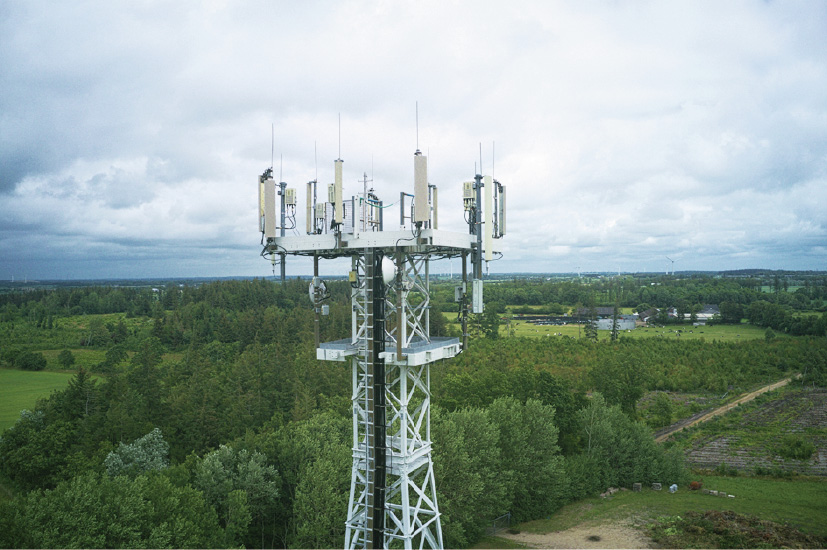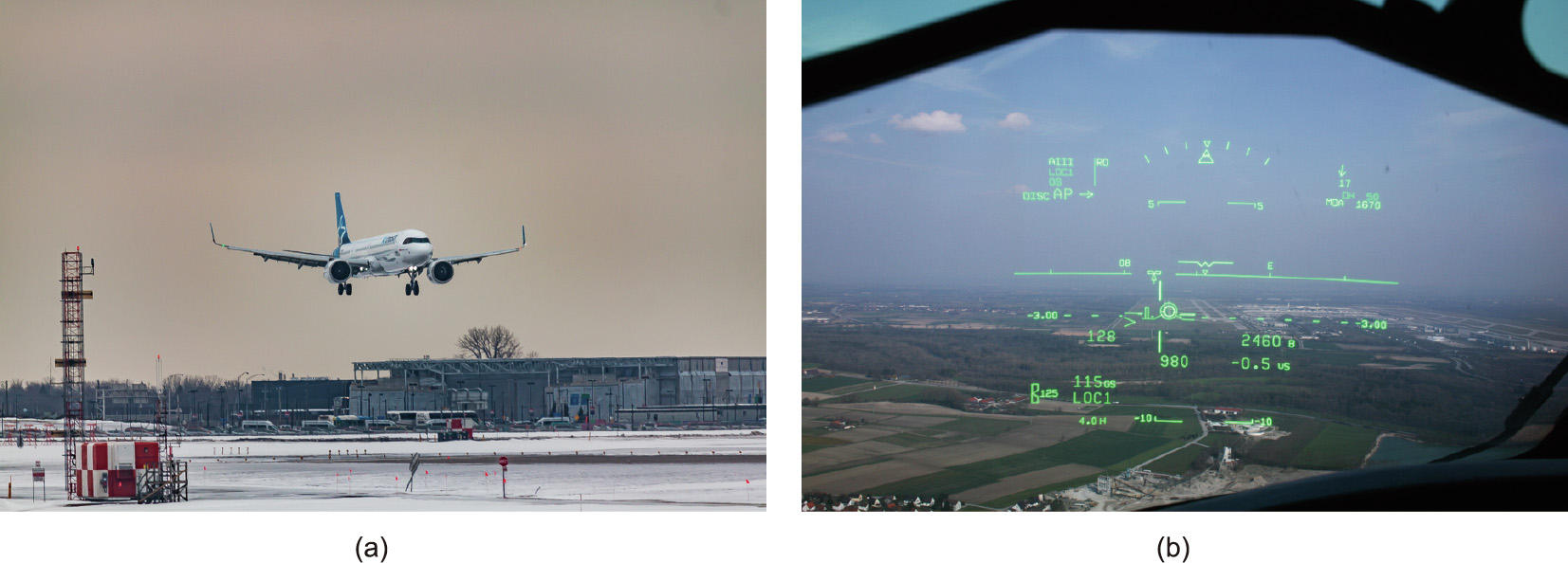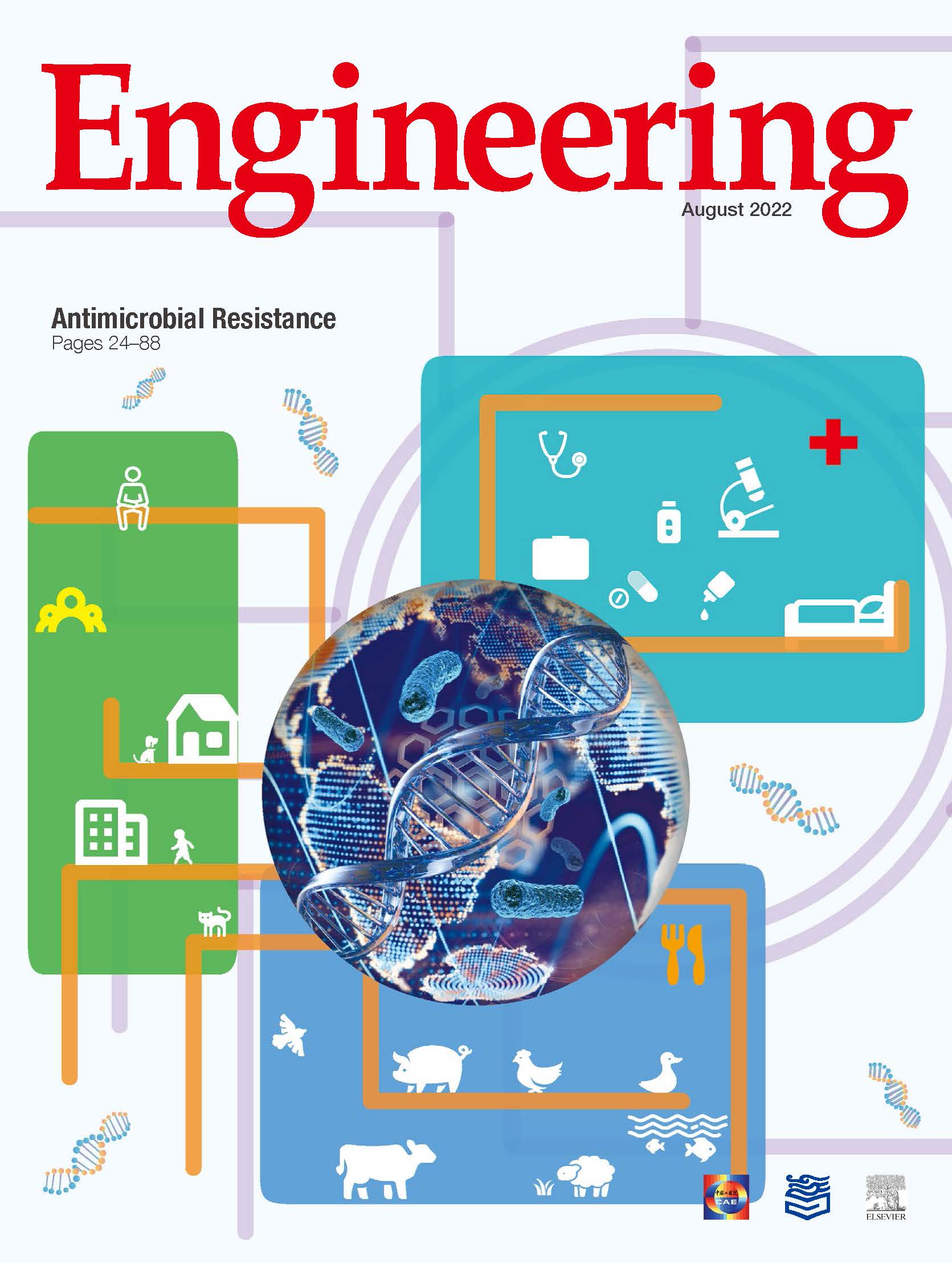Late in 2021, US wireless companies were set to dramatically increase the performance of their fifth generation (5G) networks. Although they had been offering 5G service since 2019, they were transmitting data in sections of the electromagnetic spectrum that often are no faster than the fourth generation (4G) or that provide restricted coverage [1,2]. On 5 December 2021, the two biggest companies, AT&T and Verizon, were scheduled to expand into the C-band, a range of mid-band frequencies often dubbed the ‘‘sweet spot” for wireless because it combines high speed with broad coverage (Fig. 1) [2].
《Fig. 1》

Fig. 1. 5G towers like this one are now transmitting at frequencies that are close to the frequencies used by aircraft altimeters. Expanding service to these frequencies offers better performance for cell phone users but could interfere with the proper functioning of some altimeters. Credit: Fabian Horst (CC BY-SA 4.0).
But the debut of improved 5G service hit severe turbulence because of worries that C-band transmissions would interfere with an aircraft instrument called the radio altimeter, which gauges a plane’s height above the ground and depends on a nearby frequency range [3]. The rollout was delayed for nearly two months as the wireless companies, the airlines, and two US government agencies—the Federal Communications Commission (FCC) and the Federal Aviation Administration (FAA)—wrangled about the risk [4]. The FCC, which regulates telecommunications, was convinced that 5G posed no danger. But the FAA, which regulates aircraft safety, was so concerned that just six days before the rescheduled 5G rollout was due to begin, it forbade pilots flying into or out of 100 airports from using systems that rely on the radio altimeter, including one that helps planes land when visibility is poor [5,6].
The wireless companies eventually launched upgraded 5G service on 19 January 2022. But they also agreed not to turn on C-band towers within 3.2 km (2 miles) of 50 airports—including busy facilities in Los Angeles, New York City, Chicago, and Miami—for six months [1]. This pause has permitted researchers, regulators, and the airline and wireless industries to amass data and explore potential fixes. However, a long-term solution to the clash could be months or years off, experts caution [7,8]. They add that the dispute provides a warning about the difficulties of divvying up an increasingly crowded spectrum. ‘‘We are going to see more of these types of conflicts,” said J. Nicholas Laneman, professor of electrical engineering at the University of Notre Dame, IN, USA. ‘‘Can we use them to develop new technology and policy options and to negotiate solutions that will allow different uses to better coexist?”
When US wireless companies unveiled 5G service, they stuck to the low-band spectrum below 1 gigahertz (GHz) and the millimeter-wave band, which falls between 24 and 300 GHz [2,9,10]. But both options are limiting for 5G users. Low-band signals may not be faster than 4G Long Term Evolution (LTE) because of narrow bandwidths, whereas transmissions in the millimeter-wave band can fade out after a few city blocks (0.4–0.6 km) [2]. That is why the companies were willing to pay 81 billion USD in 2021 for rights to operate in the C-band, which allows wider bandwidths—and thus much faster performance—than the low-band spectrum as well as greater range than millimeter wave frequencies [2,11].
However, airplane radio altimeters were already using the C-band, sending and receiving signals between 4.2 and 4.4 GHz [2]. The radio altimeter is not the only source of altitude data for an aircraft, but it is often the most important one below around 760 m (Fig. 2) [12,13]. Moreover, it feeds data to more than a dozen systems that warn pilots they are too close to the ground, help them take off in the right direction, engage the thrust reversers to slow the plane after touchdown, and control other functions [13,14]. Interference could cause the altimeter to provide erroneous readings or to blank, both of which could be dangerous, especially during low-visibility landings [14]. Interference could affect passenger, private, and cargo planes, along with helicopters and military aircraft.
《Fig. 2》

Fig. 2. (a) The radio altimeter is most important when planes are at low altitude, and particularly for landings in low-visibility conditions. (b) The head-up display in an aircraft cockpit projects key flight information such as altitude and air speed onto a screen in the pilot’s line of sight. It is one of the systems that depends on the radio altimeter and could be disrupted by 5G interference. Credits: Vincent Albos (CC0); Joschiki (CC BY-SA 3.0).
To curb potential interference, the FCC permitted wireless companies to transmit only between 3.70 and 3.98 GHz, creating a 220 megahertz (MHz) buffer known as a guard band [15]. The band was twice as large as aircraft manufacturer Boeing had recommended [15]. Providing added protection, altimeters often employ band filters to screen out neighboring frequencies that could produce interference [12].
The more than 40 other countries that have already switched on 5G in the C-band took a variety of precautions to forestall interference. The United Kingdom, for instance, only allows C-band transmissions up to 3.8 GHz, thus creating a guard band of 400 MHz, about twice the size of the one in the United States [16]. The UK government also performed a theoretical analysis that concluded 5G transmissions in the permitted range would not interfere with altimeters, said William Webb, chief technology officer of Access Partnership, a London, UK-based technology consulting organization. However, the UK government did not require flight tests or limit 5G towers around airports, said Webb.
Other countries have taken more aggressive measures. France and Canada required guard bands of 400 and 500 MHz, respectively, and created buffers around major airports in which 5G transmission is restricted [16,17]. At 26 Canadian airports, for instance, outdoor 5G base stations are forbidden within 9140 m of either side of each runway and within 2.1 km from either end [18]. To direct 5G beams away from aircraft that are in flight, Canada also mandates that transmission towers angle downward [18]. Before deploying 5G service, Canada did not require realworld trials to check for interference during flight, but these trials are in the works [19]. France and Norway conducted such studies after their service launched and detected no interference with altimeters in helicopters and airliners [19].
Only in the United States, however, did one government agency ‘‘throw down” against another agency and the wireless industry over 5G safety, as one article put it [20]. Experts decry how this disagreement played out. ‘‘It was a complete failure of process,” said Webb. ‘‘There is no reason this should not have been sorted a long time ago.” It was also costly, said Chris Rudell, associate professor of electrical and computer engineering at the University of Washington, Seattle, WA, USA. The United States is already behind many countries in 5G deployment, so any further disruption ‘‘has enormous economic and competitive impact,” Rudell said.
The FAA has taken much of the blame and been accused of inflating the risk, and its administrator resigned in March 2022 [21,22]. Ample evidence showed that 5G was safe, said Rudell. ‘‘Most of Europe, China, and much of the rest of the world rolled it out without a problem,” he said. ‘‘I would be comfortable flying in a plane that went right over a base station.” But Luiz DaSilva, professor of cybersecurity and executive director of the Commonwealth Cyber Initiative at Virginia Tech in Arlington, VA, USA, said he understands the FAA’s response. ‘‘They are being extremely cautious, but here you cannot tolerate much risk. Even if the risk is 1 in 1 million, it is not acceptable.”
One challenge was that the FAA did not have enough information to assess the risk, said Laneman. The agency needed to know what models of altimeters were in service, how common each was, and how they respond to 5G C-band transmissions, he said. However, the FAA’s formal request for such data was not issued until a month before the 5G rollout was scheduled [3]. As a result, ‘‘nobody could do a detailed risk analysis at the time,” said Laneman.
Experts say that the FAA, FCC, and the wireless and airline industries are now doing a better job of working together and are collecting more data on 5G’s effects. Tests underway include laboratory analyses and field trials to determine whether aircraft suffer from interference as they fly near active 5G towers [19]. Using data from wireless providers and avionics companies, the FAA has also been checking which altimeters are susceptible to interference [23]. The agency has approved the altimeters found in more than 90% of US aircraft, clearing them to land in low-visibility conditions at airports with potential 5G interference [24]. However, the research also revealed that some altimeters are not filtering out interfering frequencies and could be disrupted by 5G [25]. The devices either lack filters or have inadequate ones that do not screen out the right frequencies. ‘‘It is not all of them, but the percentage is not clear,” said DaSilva. Why these inadequacies were detected in these tests and not in tests done by other countries is unclear.
What steps will allow speedy 5G service while protecting aircraft safety remain uncertain. One issue that needs to be resolved is what to do with the inadequate altimeters. The FAA plans to institute new standards for the devices, but the rules will not be ready until 2023 [7]. Replacing substandard altimeters could cost hundreds of millions or billions of dollars, and who would pay for the upgrades is unknown [26]. Another issue is whether the restrictions on 5G transmission near certain airports should continue. The wireless companies only agreed to curtail service until July 2022, and these restrictions impair 5G service for large numbers of people in some cities, including New York City and Los Angeles [11].
As the FAA, FCC, and wireless industry work out the optimal approach for 5G, they also need to think about how to solve the next dispute about spectrum allocation, Laneman said. ‘‘It is very important that we take a collaborative, scientific, and data-driven approach so we can cut through the noise.”













 京公网安备 11010502051620号
京公网安备 11010502051620号




